Conwy (Caernarvonshire) Golf Club is old, having been founded in 1890. But golf had been played on the Morfa from 1868. In 1875 a group of golfers from Royal Liverpool arranged for a 12-hole layout to be professionally designed (Jack Morris). In 1895 the course was extended to a full 18 holes.
Since then the club and course have been through trying times. A huge army camp was built on the site during the First World War, flattening many of the natural features. Again, during the Second World War, military occupation threatened to ruin the course. It was during this war that the marsh behind what is now the 2nd green was dug out for the construction of a large part of Mulberry Harbour, a key to success in the Allied landings. More recently that land was again dug out for the construction of the A55 tunnel under the river estuary. It was floated out of its construction base just as the pieces of Mulberry Harbour had been in 1944. That has now been converted into a marina with unusually attractive modern housing. The building of the tunnel necessitated taking some land from the club and giving it some more land at the far end. The course was considerably altered as a result, first with amendments by Frank Pennink, then further changes by Brian Huggett and Neil Coles. The golf course designer and club member, David Williams, was commissioned to redesign the short 2nd hole. It is a cracker! Finally, in preparation for hosting Open Championship Final Qualifying in 2006, Donald Steel was brought in to revamp the bunkering. Fairway watering was installed, but it is used very sparingly and the traditional brown coat is still worn by the course in the summer months.
Conwy has been used for a host of genuine championships, men, women and juniors, throughout the years and it can be stretched to almost 7,000 yards for this purpose. When Open Championship Final Qualifying took place only three players broke par over two rounds, Jon Bevan, Warren Bladon and Mikko Illonen, with Illonen going on to a top-20 finish at Hoylake.
I joined Conwy as a country member in the 1970s when I was living in London. When I moved north in 1979 I changed to full membership. Although the course was 80 miles away, the M56 and A55 are good, fast roads, and when the children were young I could leave them with my parents so I played there more or less every week. At that time there was no possibility of joining one of the better Cheshire clubs which all had full waiting lists. After my parents had died it was obvious that I would visit less frequently and it was at that time that a new clubhouse was to be built. Some of the funding came from Life Memberships, one of which I took. It means that now my annual sub is all of £7 being the Welsh Golf Union subscription!
The course is busy, with booked starting times necessary throughout most of the year. One of the best ways of playing it is to enter any of the open competitions held during the Bob Jones Week at the end of July (there is an on-line site). The food is excellent and inexpensive and there is no better welcome from a professional than that of Peter Lees who has been with the club for over 40 years.
Yardages are from the menís medal (white) tees, giving a total length of 6647 yards, par 72, SSS 74.. Sorry about the poor light. 1st August, temperature ca 70F, absolutely no wind and no hint of the sun.
1. 375 yards par 4
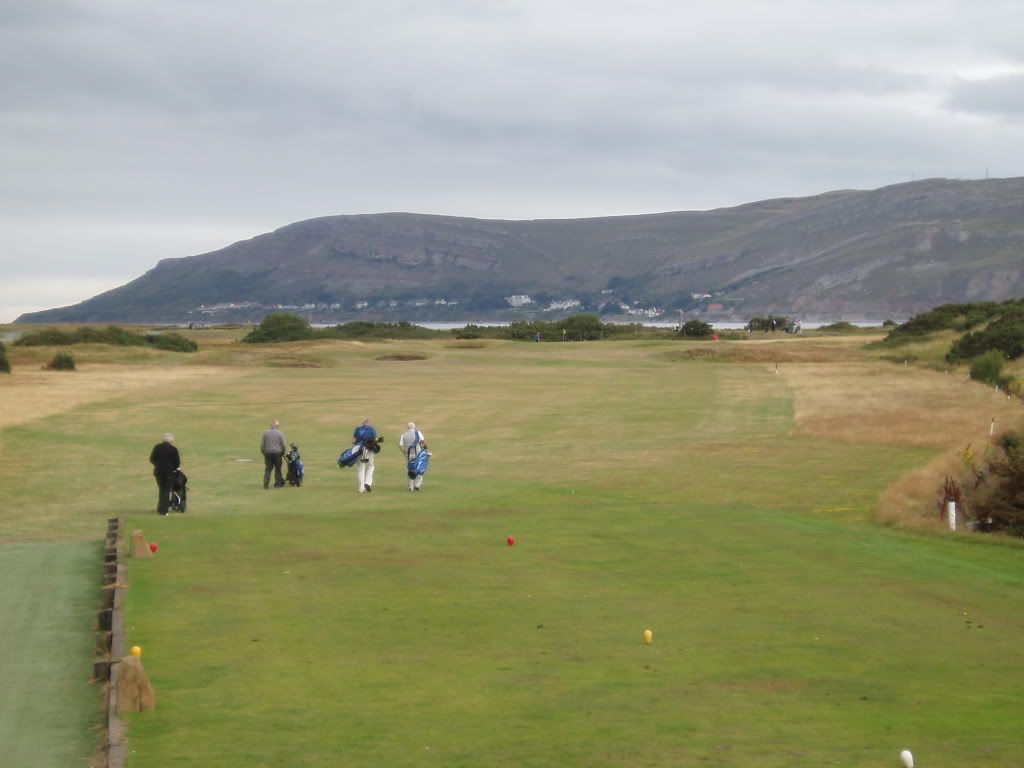
Not too difficult an opening tee shot (20 yards longer from the blue tees) on a still day, but when the wind blows (and how fiercely it can blow here!) this can be quite a handful with out-of-bounds over the ditch to the right and a pair of greedy bunkers awaiting just where the fairway narrows on the left.
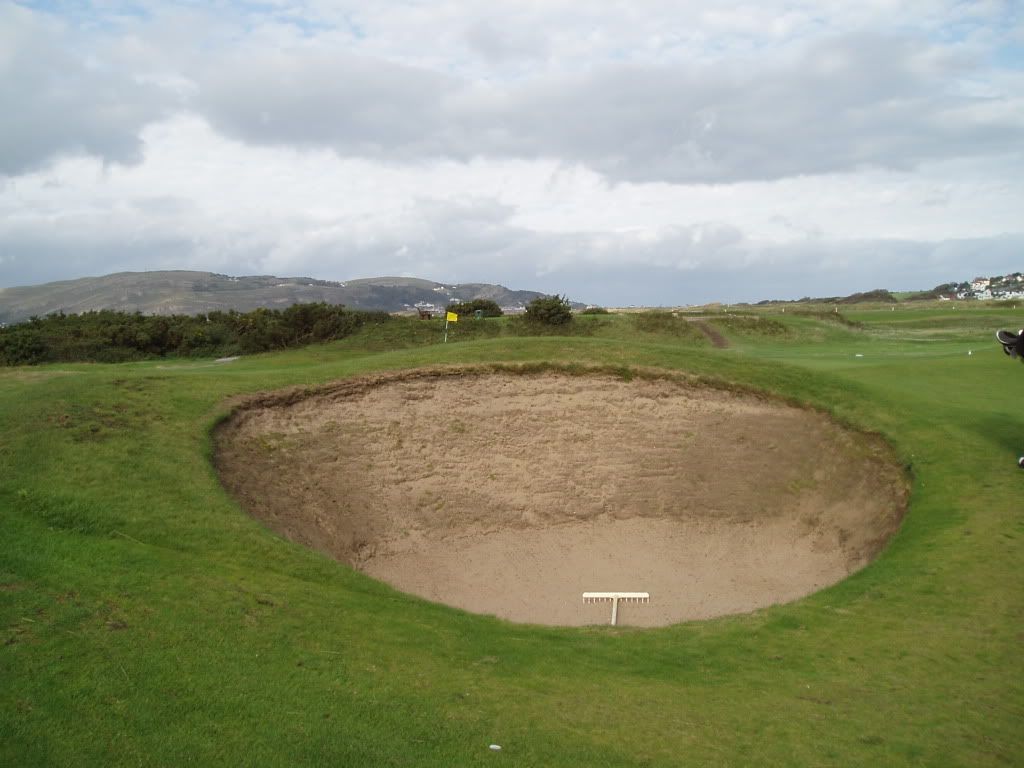
The approach to the green is made over a ridge which obscures the bottom half of the flagstick, flanked by two typical seaside bunkers.
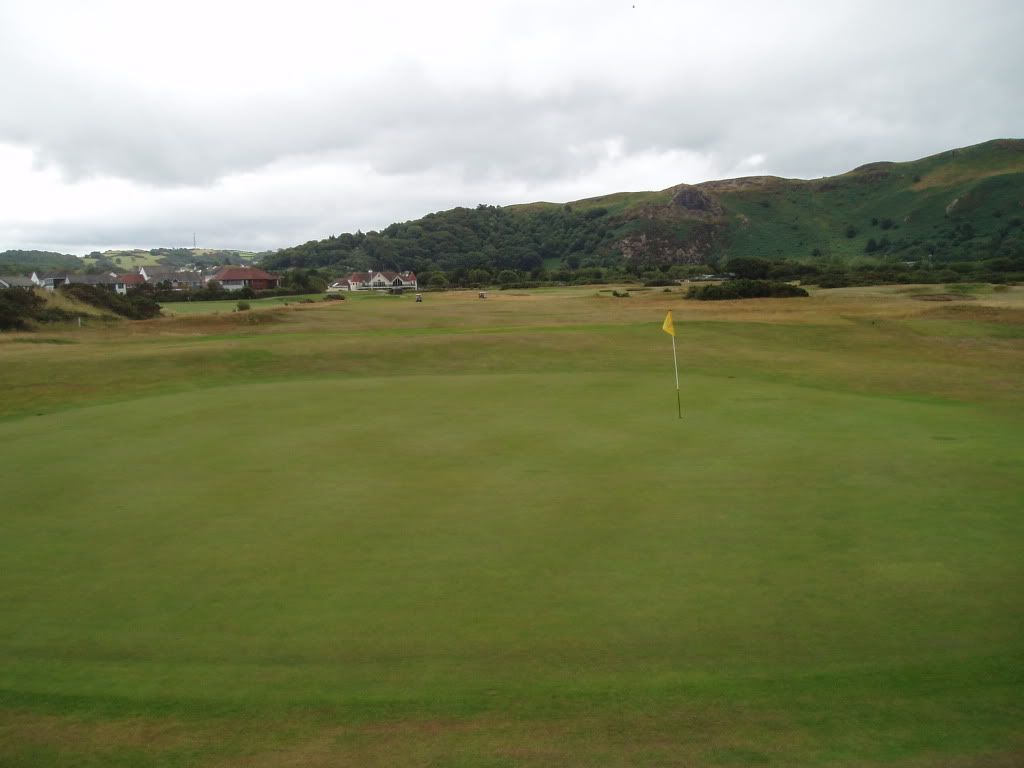
Looking back from behind the green you can just make out the ridge which complicates the approach shot. All too often the shot hits the downslope of the ridge and scuttles through the back of the green.
2. 147 yards par 3
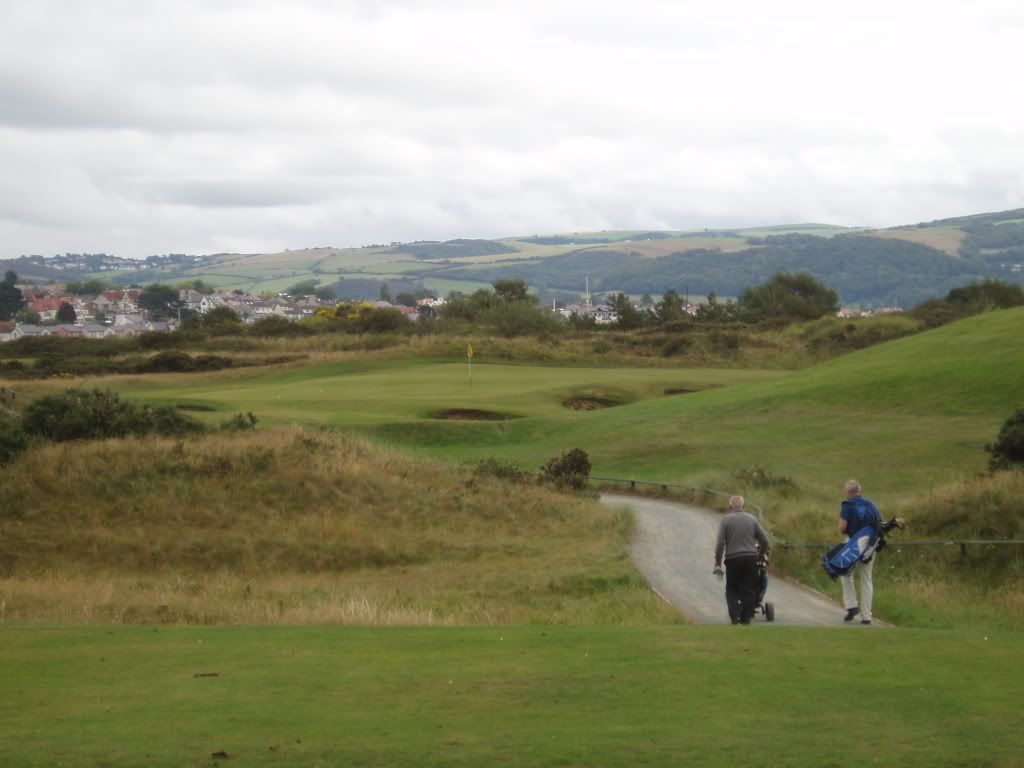
This green was substantially rebuilt some years ago by David Williams. It is tricky. There are two bunkers at the front and a further three eating into the putting surface on the right. But what make this green so interesting are the many different slopes. There is no straight putt and a ridge running through the putting surface complicates things even more.
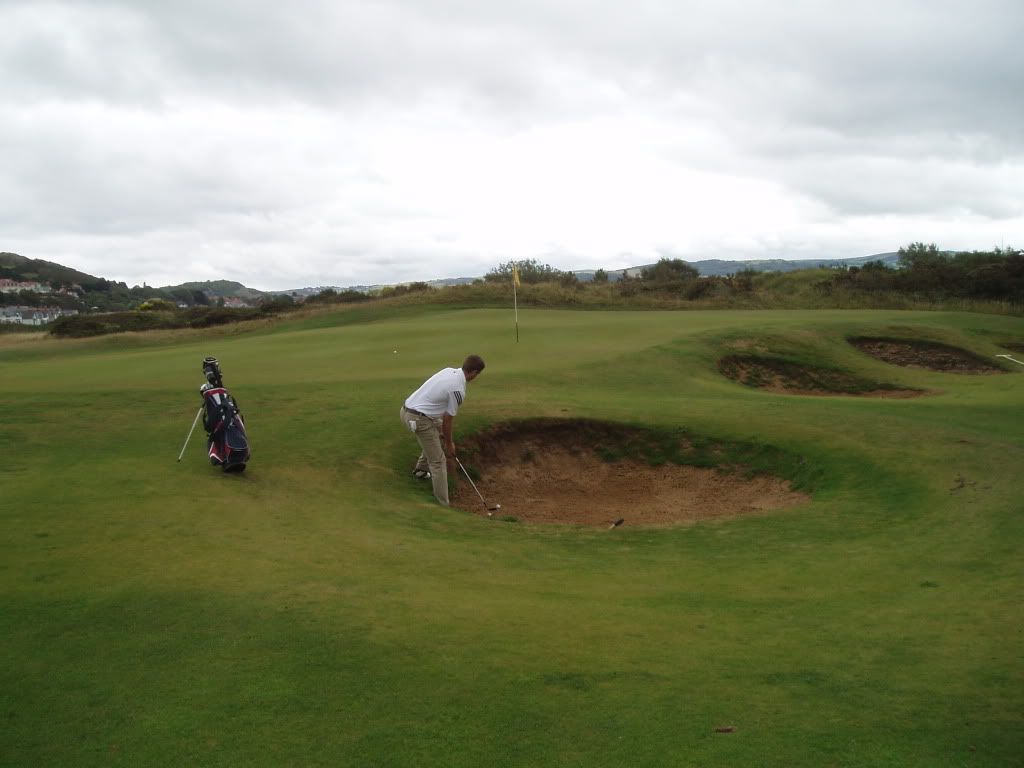
Oh dear! Two of us came up one club short.
3. 335 yards par 4

This hole plays at 379 yards from the championship tee. It is a good hole from there with the fairway snaking left 250 yards out and a bunker on the right at 256 yards. The smart play is a long iron for position leaving a wedge or short iron up onto the green.

Two balls in position A. As you can see there is a lot of activity behind the green, with the 4th and 10th tees just beyond the putting surface. Many approach shots come up short just because of this. There is actually plenty of room.
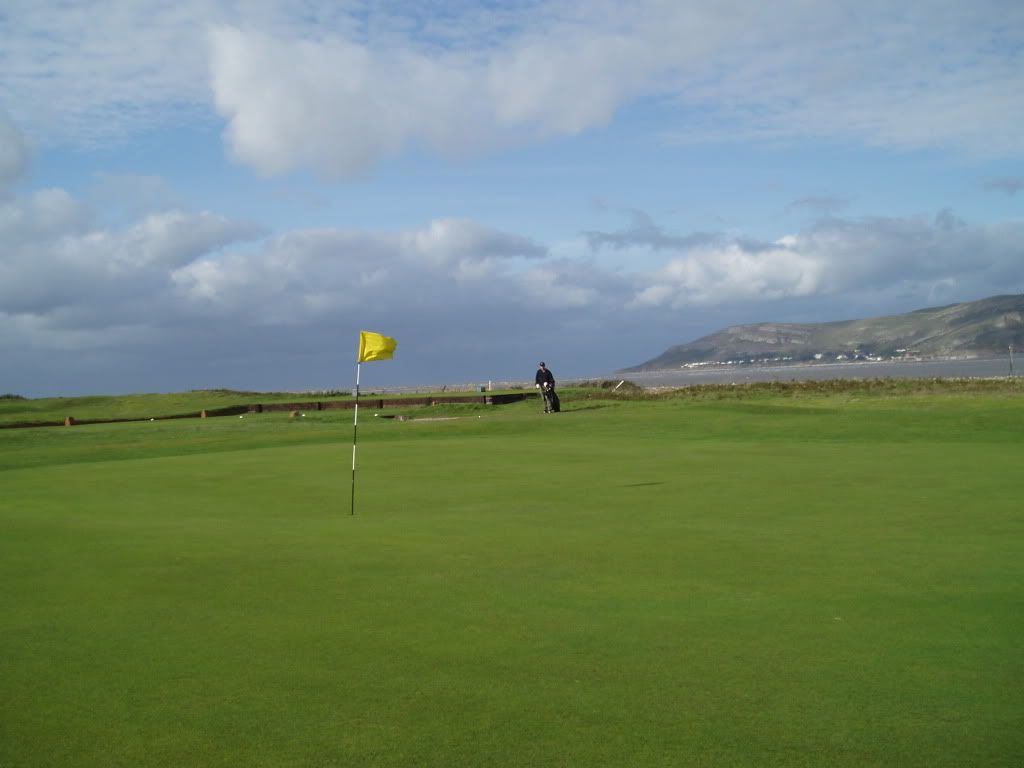
Itís a nice spot up here, with good views over the Conwy Estuary. That is the Great Orme on the far side. There used to be a golf course right up on the summit!
4. 393 yards par 4
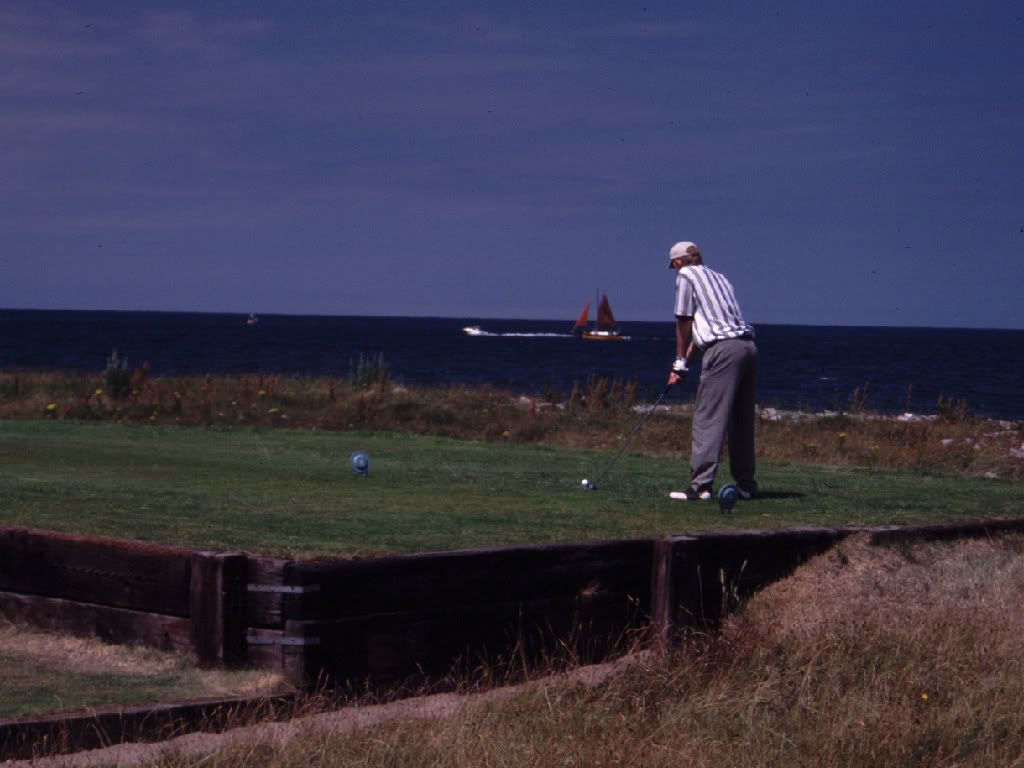
It is 405 yards from this championship tee.
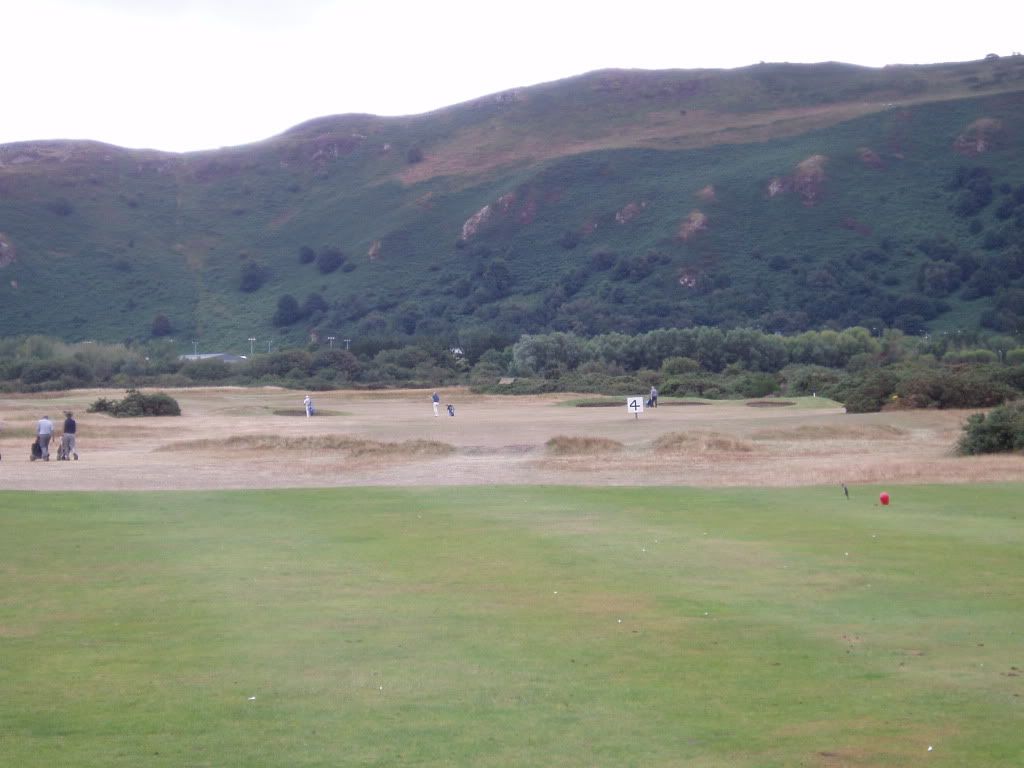
As I said, there are two tees up here, the 4th and 10th, hence the need for a marker post to indicate which fairway is which. The fairway bears left past a bunker on the left about 250 yards out and there are three bunkers a little further on to the right for the big hitters who hit too straight.
The shot to the green is deceptive because there is a ridge obscuring the putting surface 30 yards short of the green, and you canít see a deep bunker on the left front of the green.
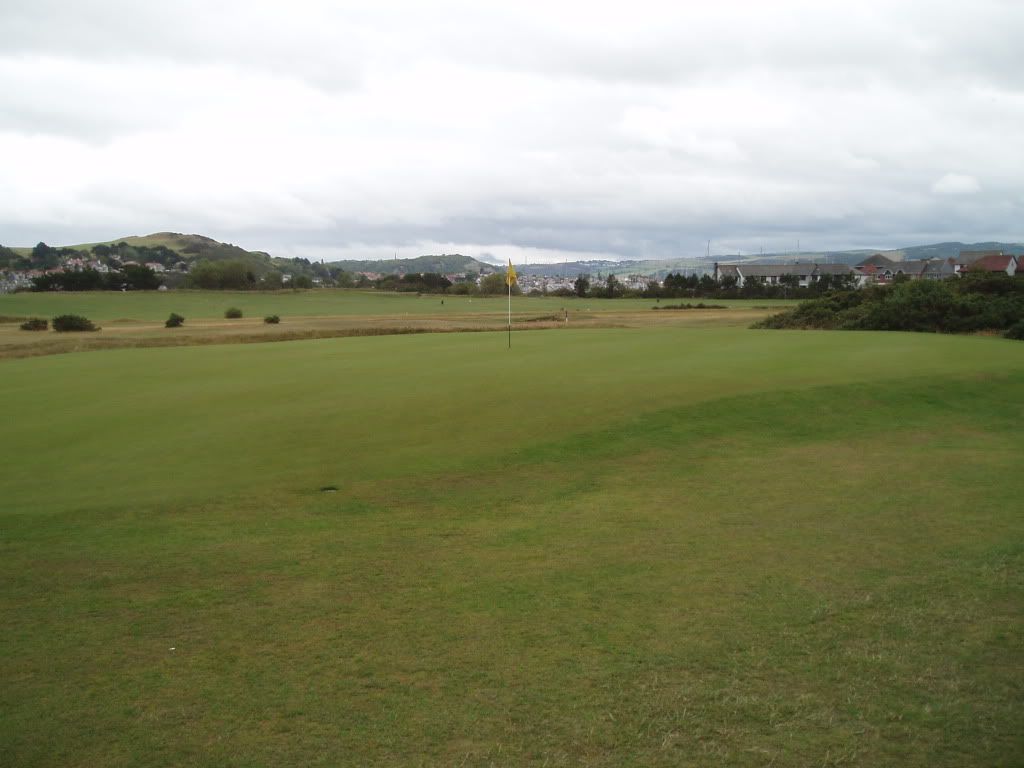
There is a considerable slope up at the front of this green and it is quite easy for an approach shot to roll off the sides or back of the putting surface.
5. 442 yards par 4

It is not immediately apparent where to drive on this hole.

Those people are on the green (with the road tunnel in the background). To the left of them is a clump of dark gorse and to the left of that a right fairway bunker 278 yards out.

And this bunker on the left is 269 yards out. So the long driver has to be very careful about getting between the two Ė a difficult task as this hole usually plays directly into the teeth of the gale. As a shorter hitter my problem is chewing off just the right amount of gorse from the tee. I can no longer aspire to getting on this green in two shots.
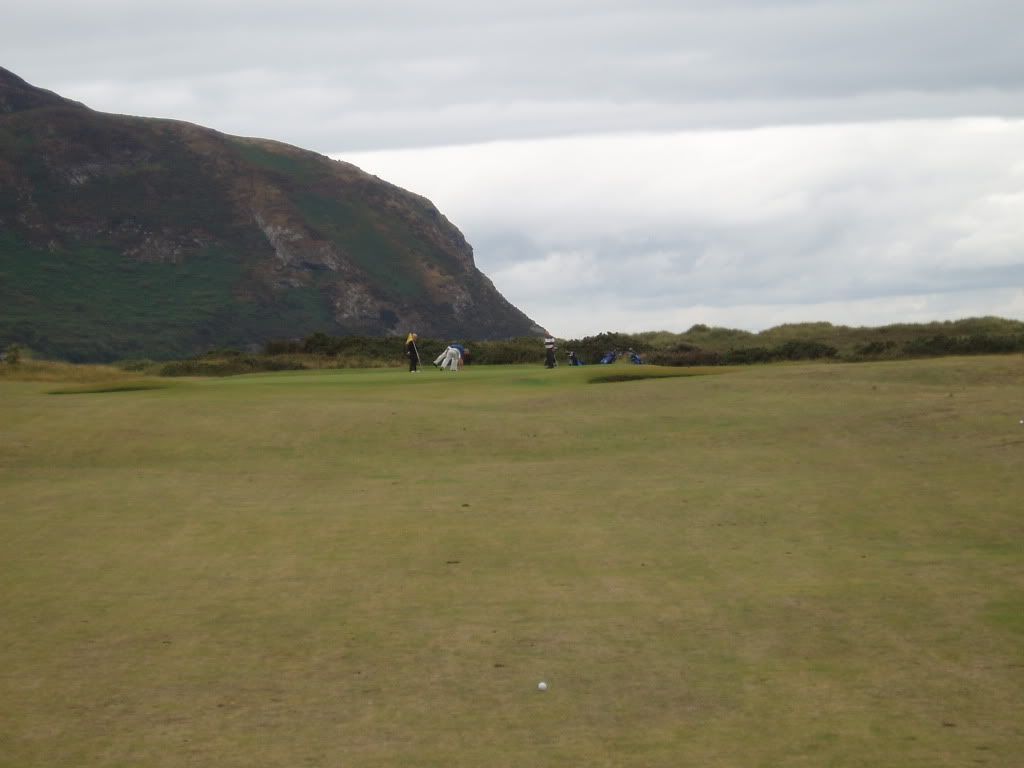
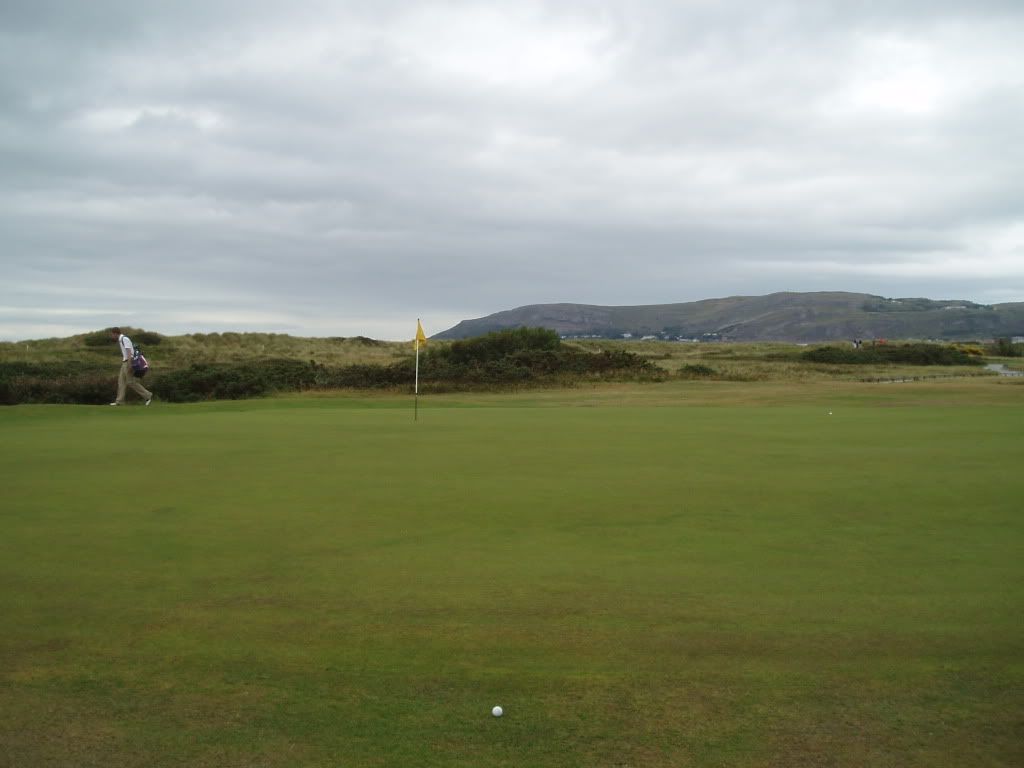
With little feature in the flat ground of this fairway and only rock roses off the fairway distance judgement is tricky in finding this green, especially when played into the wind.
6. 177 yards par 3
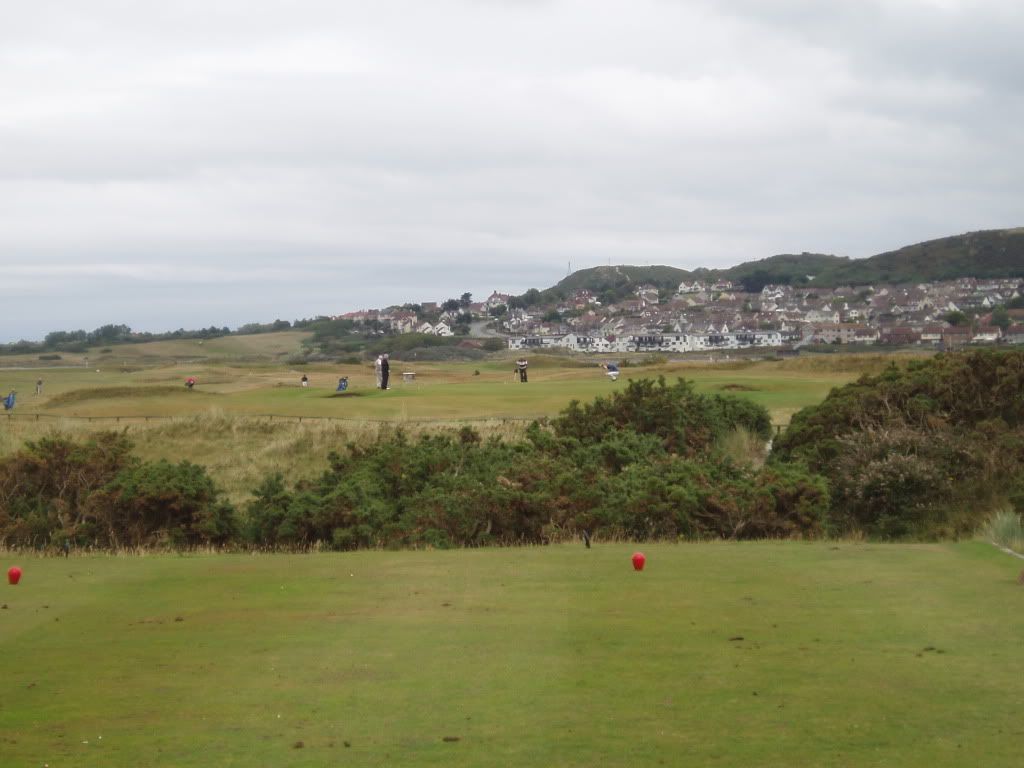
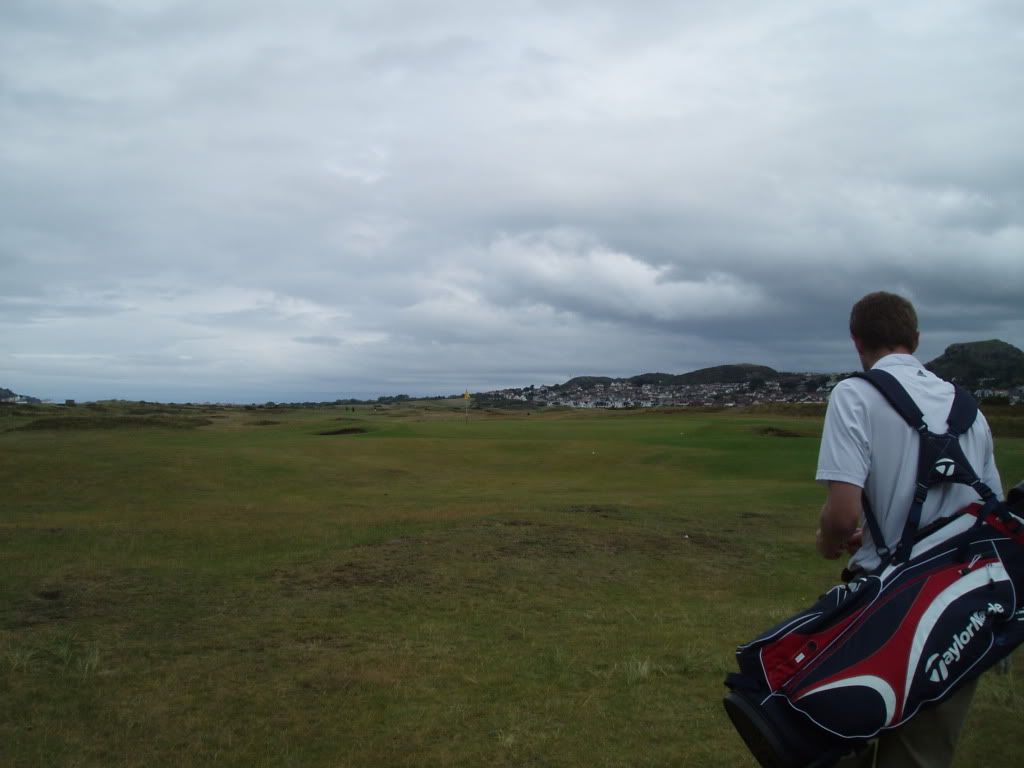
And it is the flatness of this hole that again makes distance (and direction) judgement tricky. Inland this would be utterly unmemorable. By the sea it suddenly takes on considerable character.
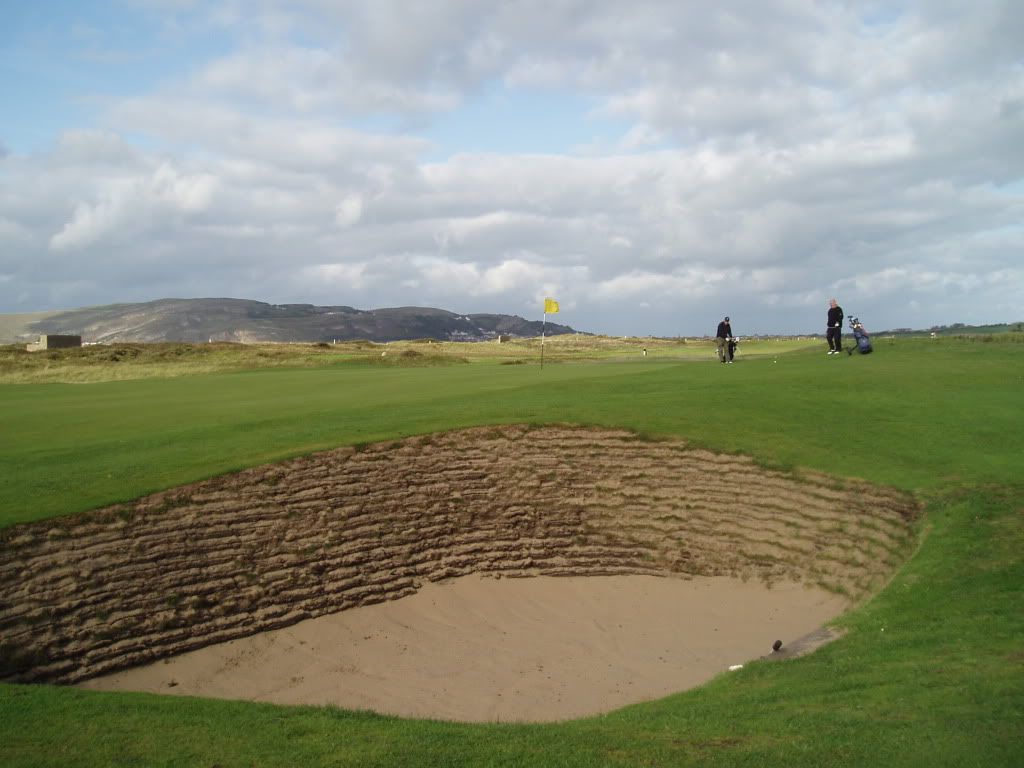
What you canít see from the tee is the depth of the bunkers either side of the entrance to the green. The wind is often from behind and you may need to drop the tee shot short and feed it up the sloping front of the green between those bunkers. Anything which misses the green will bounce far away leaving a nasty chip back with those bunkers again threatening.